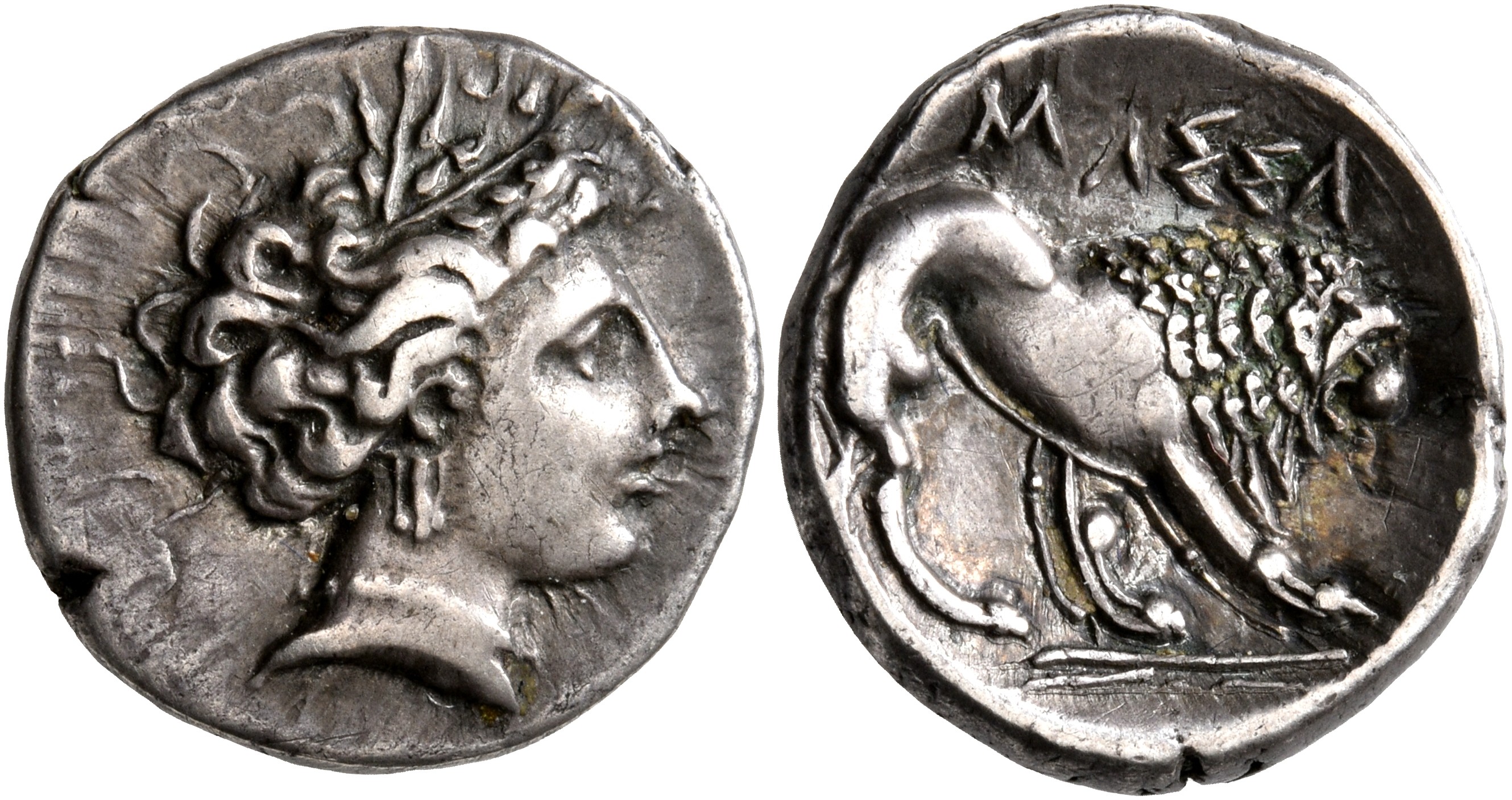S 727 - Massallia, silver, drachms (250-200 BCE)
From SILVER
250 BCE - 200 BCE Silver 1,994 kg
Description
| ObverseInscription or printing placed on the obverse.: | Head of Artemis to right, wearing wreath of olive branches, pendant earring and pearl necklace |
| ReverseInscription or printing placed on the reverse.: | MΑΣΣΑ (Greek).Lion prowling to right |
Mint and issuing power
| MintIdentifies the place of manufacture or issue of a numismatic object.: | Massalia | Ancient regionAncient region.: | Gallia | Modern countryModern country: France | AuthorityIdentifies the issuing power. The authority can be "pretended" when the name or the portrait of X is on the coin but he/she was not the issuing power. It can also be "uncertain" when there is no mention of X on the coin but he/she was the issuing power according to the historical sources: |
Chronology
| FromIdentifies the initial date in a range assigned in a numismatic context. | 250 BCE | toIdentifies the final date in a range assigned in a numismatic context.. | 200 BCE | PeriodTime period of the numismatic object.: Hellenistic 323-30 BC |
Physical description
| MetalThe physical material (usually metal) from which an object is made.: | Silver |
Median weightMedian of the weights of numismatic objects (in grams). in grams | 3.70 | DenominationTerm indicating the value of a numismatic object. Examples: tetradrachm, chalkous, denarius.: | drachma |
StandardStandard.: |
Image

S 727 - Massallia, silver, drachma, 250-200 BC.jpg [1]
References
| Die study referencePublication of the study: | Corsi - Aulisio 20181Corsi - Aulisio 2018 | ||
| Coin series referenceReference to coin series study: | |||
Obverse dies distribution
| FrequencyFrequency of specimen in distribution. ᵖ | Number of obversesNumber of obverse dies. ᵖ (o) | % (o) | Number of coinsNumber of coins. (n) | % (n) | Die nameName(s) of the die(s). |
| 1 | 5 | 21.74 | 5 | 5.56 | 14, 16, 18, 19, 23 |
| 2 | 3 | 13.04 | 6 | 6.67 | 2, 10, 17 |
| 3 | 4 | 17.39 | 12 | 13.33 | 1, 13, 20, 21 |
| 4 | 2 | 8.7 | 8 | 8.89 | 5, 6 |
| 5 | 3 | 13.04 | 15 | 16.67 | 4, 12, 22 |
| 6 | 1 | 4.35 | 6 | 6.67 | 9 |
| 7 | 3 | 13.04 | 21 | 23.33 | 3, 7, 11 |
| 8 | 1 | 4.35 | 8 | 8.89 | 8 |
| 9 | 1 | 4.35 | 9 | 10 | 15 |
| Total | 23 of 23 | 100 | 90 of 90 | 100.01 |
Reverse dies distribution
no distribution is available
Quantification
| Number of obversesNumber of obverse dies. ᵖ (o) | 23 | Number of singletons (o1)The number of singleton coins. ᵖ | 5 |
| Number of reverse diesNumber of reverse dies. (r) | 28 | Number of coinsNumber of coins. (n) | 90 |
| Coins per obverse dieNumber of coins per obverse die. (n/o) | 3.91 | Coins per reverse dieNumber of coins per reverse die. (n/r) | 3.21 |
| Reverse per obverse ratioRatio of obverse dies divided by reverse dies. (r/o) | 1.22 | Percentage of singletons (o1)number of coins (n) divided by the number of singletons (o1) ᵖ | 21.74 % |
| Original number of dies (O) (Carter 1983 formula)The estimation of the number of coins according to Carter 1983 ᵖ | 26.95 | Coins struck if 20,000 as average productivity per dieCoins made if the average productivity for obverses (according to Carter) is 20,000. ᵖ | 539,000 |
| Original number of dies (O) (Esty 2011 formula)The estimation of the number of coins according to the singleton formula in Esty 2011 ᵖ (O) | 30.9 | Survival rate if 20,000 as average productivity per dieSurvival rate if average productivity is 20,000. ᵖ | 0.00017 |
| Coverage (o = % of O) (Esty 1984 formula)Esty 1984 - coverage (% of O) ᵖ (o = % of O) | 94.44% | Die productivity if survival rate 1/2,000Average productivity if survival rate is 1/2,000. ᵖ | 6,679.04 |
| Weight of silver (in kg) if 20,000 coins per die (O = Carter formula)Carter 1983 * Median weight * 20000 (*10 if gold or electrum) ᵖ | 1,994 kg <br /> 1,994 kg | Die productivity if survival rate 1/5,000Average productivity if survival rate is 1/5,000. ᵖ | 16,697.59 |
Remarks
Most likely one single workstation
References
- ^ Corsi, Jacopi - Aulisio, Giorgio (2018), "The lions of Artemis. A die link study of the heavy drachms of Massalia", Revue Numismatique, 175, p. 147-192.